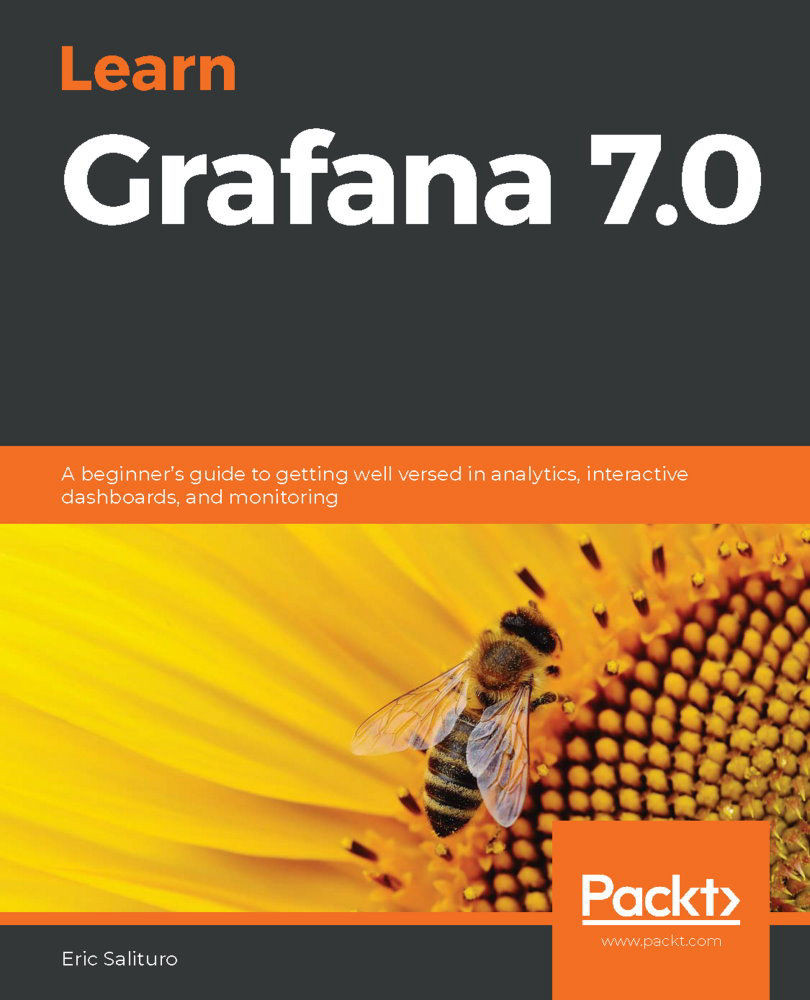By this point, you've successfully installed and run Grafana; so next, we're going to familiarize ourselves with the Grafana User Interface (UI). In this chapter, we will take a general tour of the default Home dashboard, mostly concentrating on the sidebar menu. While you will spend the majority of your time interacting directly with dashboards and panels, you will find the side menu is a helpful navigation hub, providing both quick access to simple creation pages and links to more complex functions, including data source creation,Explore mode, alert management, and server administration.
This chapter is intended to provide a mostly high-level tour of these major functions; we will go into more detail about each function later in the book. I'll point out which chapters correspond to the topics covered. If you're already somewhat familiar with Grafana, this chapter should...


